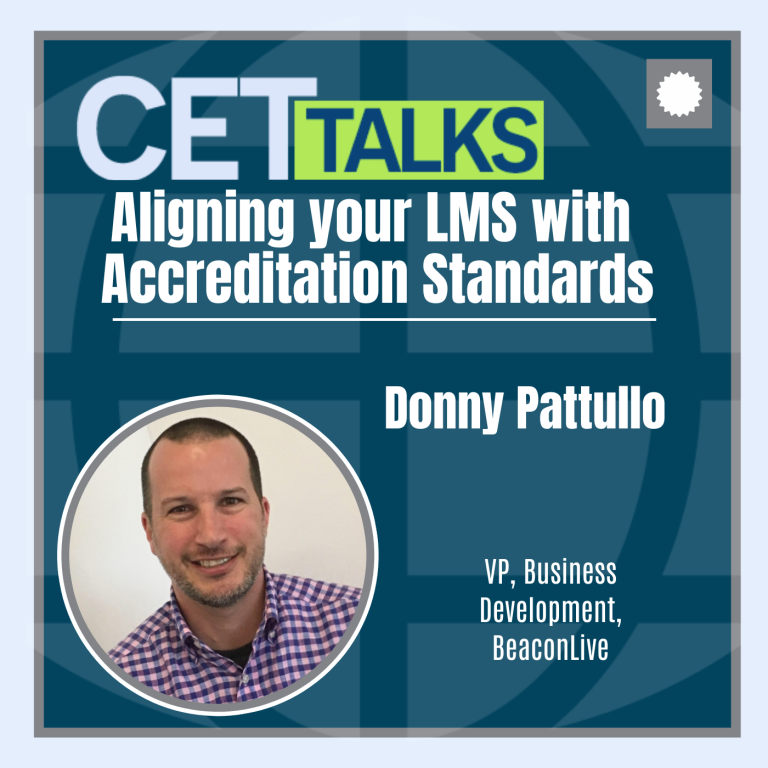Episode 11
.
CET Talks: Accreditation, Learning and Leadership
Episode 11
OCOBER 31 2023 . 27 MINUTES
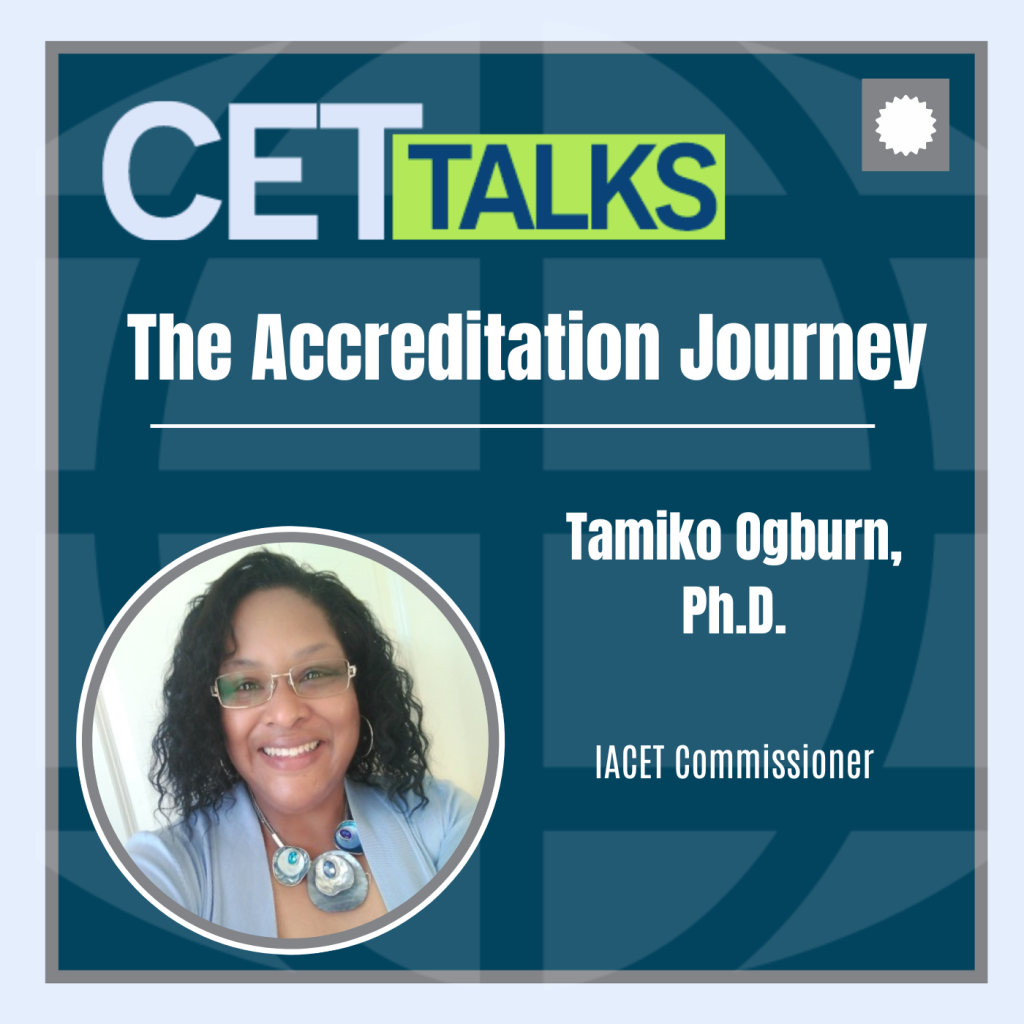
The Accreditation Journey: Practical Strategies from Detroit's Accreditation Manager
Randy Bowman, Interim President and CEO of IACET, and co-host, Mike Veny, CEO of Mike Veny, Inc., an IACET Accredited Provider, interview Tamiko Ogburn, Manager of Learning, Design, and Organizational Effectiveness for the City of Detroit. Tamiko shares insights on building a quality training organization as an accreditation manager. She also discusses key factors in curriculum development, including aligning with organizational goals, managing the accreditation process, and fostering innovation. Tune in to hear practical strategies and inspiration for individuals looking to improve their training organizations on the path to accreditation.
Listen to the Podcast
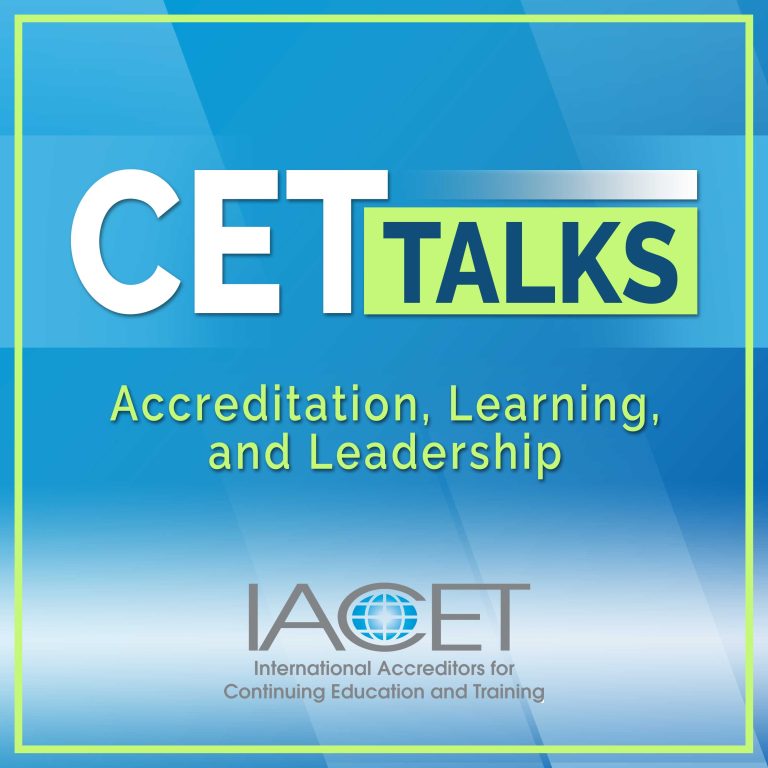
Welcome to CET Talks, the International Accreditors for Continuing Education and Training’s podcast, where we convene thought leaders in the continuing education and training ecosystem to share ideas, research, best practices, and experiences that promote the creation of a world that learns better. Your hosts are Randy Bowman, Interim President and CEO of IACET, and certified corporate wellness specialist Mike Veny.
Randy Bowman, Interim President and CEO of IACET, and co-host, Mike Veny, CEO of Mike Veny, Inc., an IACET Accredited Provider, interview Tamiko Ogburn, Manager of Learning, Design, and Organizational Effectiveness for the City of Detroit. Tamiko shares insights on building a quality training organization as an accreditation manager. She also discusses key factors in curriculum development, including aligning with organizational goals, managing the accreditation process, and fostering innovation. Tune in to hear practical strategies and inspiration for individuals looking to improve their training organizations on the path to accreditation.

Transcription
Host: Welcome to CET talks, the International Accreditors for Continuing Education and Training’s podcast, where we convene thought leaders in the Continuing Education and Training ecosystem to share ideas, research best practices, and experiences that promote the creation of a world that learns better. Enjoy the episode.
Randy Bowman: Hello, and welcome to CET talks. My name is Randy Bowman, and I am here with my co-host, Mike Veny, a certified corporate wellness specialist and CEO of an IACET-Accredited provider.
Mike Veny: I am the co-host, Mike Veny. I’m excited for today’s guest, Tamiko Ogburn. She’s the manager of Learning Design and Organizational Effectiveness for the City of Detroit. She got her undergraduate degree in Management in Organizational Development from Spring Arbor University, a Master’s degree in Human Resources Management from Marygrove College, a Master’s degree in Education from Wayne State University, and she’s currently enrolled in a PhD program at the University of the Cumberlands. She’s served as a teacher in the K to 12 environment, an education administrator in the post-secondary environment, and worked in the field of education in some capacity for the last 22 years. She’s also a human resources professional with a focus on talent development and instructional design, and a published author with several titles including the Campus Operations Workbook, Mom’s Hands, Mommy, Where in the World Did I Come From? and many more. And finally, she serves as an IACET Commissioner, where she reviews applications for accreditation by those seeking to become accredited. Tamiko, welcome to the show.
Tamiko Ogburn: Thank you. I’m glad to be here.
Mike Veny: Can you tell us, in your own words, a little bit about yourself and your journey as an accreditation manager for the City of Detroit? What does your role entail within a training organization?
Tamiko Ogburn: I am one of the co-managers with the City of Detroit. The City of Detroit understands the need to have a few people that understand the accreditation process, just in case there’s turnover, someone is ill, or vacations, and things like that. It’s important for several of us to understand the accreditation process. My role as a manager is to ensure that the processes are in place, that they are implemented on a regular basis, that we maintain this process, that everyone is aware of the process, and that it’s communicated to the entire team. I usually assign tasks for this process, so everybody feels involved and they have input. I schedule regular meetings for us to discuss this process; the overall operations of the learning outcomes, the learning events, those are things we manage, that entire process along with the rest of the team.
Randy Bowman: So definitely not something you do alone.
Tamiko Ogburn: That’s right.
Randy Bowman: So for all the Accredited Providers who are listening, when you’re building a quality training organization, what key factors do you prioritize in terms of curriculum development and program design?
Tamiko Ogburn: That’s a great question. The first thing we look at, as managers of this process or even of a training program, is to assess the need of the training program. We want to make sure there’s a need for the program, and also that we have the capacity to be able to meet the need for the program. The City of Detroit is a large organization and has a very diverse population of employees which we serve. It’s critical to ensure we can meet their needs. If we are not able to meet the needs, then perhaps there are external sources that could assist with meeting those needs. We have to make the decision whether we’re going to outsource the services, if that’s something we can do in-house, or is it a combination of both? We have this training program plan where we come together and determine what’s needed. Do we have the budget to do this, do we have the tools and resources to make this happen? Do we have buy-in from everybody who we need buy-in from? Do we have buy-in from the leadership, because that’s important. We’re going to need support from the leadership. Those are things that we look at initially. If we decide this is something we can do in-house, then we need to decide what type of resources do we need? We need instructional designers, facilitators, administrators, analysts; there are a lot of components to this. When we look at the City of Detroit, it’s a large organization. We need a lot of resources to make it happen and to be consistent with what we do, to maintain a great structure and great processes. Making sure that there’s a need, ensuring that you can actually meet that need, and how are you going to meet that need; that’s the plan in the very beginning.
Mike Veny: Speaking of leadership, especially in an organization like yours where there’s competing priorities, agendas, and goals that might be changing every few years, what strategies do you employ to ensure that the training is in line with the organization’s goals and the learners and industry demands?
Tamiko Ogburn: I’m so glad you asked that question, because that’s something that we’ve been looking closely at in the last few years. With the City of Detroit and in the Office of Talent and Performance Management, we have developed strategic planning retreats. That’s something we do with every department within the City of Detroit. We start with the leadership, and we have a strategic planning day when we work with them for the entire day on their plans. We want to make sure that their mission, vision, and goals align with that of the mayor’s goals or the leader of the City of Detroit. The mission, vision, and goals are aligned with the division goals that are within their department, and they’re also cascaded down to all of the managers. Then those are passed down to the individual contributors to ensure that that takes place. We make sure those goals are listed on the performance evaluations for individual contributors, for supervisors. That is always in the forefront. Everyone is always aligned with their division goals, their department goals. They know what they do contributes to the division, how it contributes to the department, and how it contributes to the overall goals for the City of Detroit. That is critical for the City of Detroit. What we do as a planning and training department and division is not only do we do that in-house for our own team, which is a wonderful team, I might add, but we also do that for all of the other teams within the City of Detroit.
Mike Veny: For those Providers out there that are listening, that are thinking about IACET accreditation, and you might even have begun the process, it’s a very complex process. Tamiko, how do you guide your organization through the various stages and requirements of the accreditation process?
Tamiko Ogburn: It is a complex process, but our team is a highly organized, very accurate team. It’s not that difficult for me because our team wants to be accurate, they want to have great processes. Communication is the key to making sure that everyone is on board. A one-man show is not going to do it. These are the people that are responsible for accreditation. That doesn’t work because you need everyone who works in the learning department or works in that area to understand and know the value of accreditation, the value it brings to the organization and the benefit for all of them, as well as the people that they serve. Once people understand that, it’s easier to get them on board. The other part is making sure the team is involved. If they’re not involved, then they can easily get distracted. They can easily get too busy to work on this project. Then if we just pull them together when it’s time for reaccreditation, we’re going to find that it’s going to trigger some people because they may not know the process, and they may not understand the benefit. When people don’t understand the ‘why’ of why we do things, it’s not as important to them, and they don’t put all the effort into it. My recommendation is communicate the ‘why’—why is the organization interested in accreditation—communicate the benefit and the value. Those things are critical and important. I’ve created a course on accreditation, and I used a lot of the information from the IACET website. I created a course that’s for new employees. The current employees all know, but as we get new employees, and what if I’m not with the organization anymore; this has to be sustainable. New employees have to take this course, so they’ll know what we’re doing with IACET, why it’s important to us, and the value of it.
Randy Bowman: Wow, that’s such a practical strategy to communicate and get buy-in early with your new hires. That’s a great idea. What are some of the other practical strategies that you use for managing documentation and staying organized throughout the accreditation process?
Tamiko Ogburn: Making sure that we have all the documents in one place is very important, because everyone contributes. Again, it’s not just that one person, but because everyone has their hand in the pot, it’s important for us to have all of our documents in one place. We use SharePoint to do that and make sure that it’s all stored. We used a different software, but now I think it’s better for us. Everybody already works in SharePoint, so we store all of our documents there for that process, and then we make sure we are assigning out those responsibilities to the people; that’s kind of their strength, that’s something that we pride ourselves in doing. If someone is more process-oriented, then they work on a lot of the processes for us. If they’re more performance-oriented, then they help us implement those processes. If they’re more people-oriented, then they help us communicate those processes and get those out. We have everybody work in what they like to do. Because we all work together, we all have access to those documents at any given time. If we bring new hires on, we can also help train those people, show them those documents as well, and they’ll have access to them fairly quickly and easily.
Randy Bowman: Wow. Thank you so much. You’re so intentional with how you do this.
Tamiko Ogburn: We have to be.
Randy Bowman: Could you elaborate on some of the challenges that training organizations might face during the accreditation process? And how would you address those?
Tamiko Ogburn: Sure. One challenge is we may not have the buy-in we need from leadership. When we don’t fully have the buy-in from leadership, then we don’t have the support we need. Everything is a struggle. There’s a struggle to get fees paid. There’s a struggle to get the tools and resources we need. It takes longer because people don’t see the value in it. It’s important in the very beginning for everyone to understand the value before we even decide this is something we want to do. Not just one person sees the value; that is key. The other challenge is having one or two people responsible. Sometimes there’s turnover and when those people leave, now people are struggling. We are already accredited, but now we’re struggling to try to find who’s going to take over. That person took all the intellectual property with them, so we don’t know what to do next. Those are some struggles that we see. When one or two people are involved, and they throw everybody else in when it’s re-accreditation time or when it’s actually time to have their accreditation visit, then your team might be triggered a little bit. That might be another challenge that you face because they’re like, “We didn’t know.” I don’t know about you, but when I don’t know something and it’s thrown on me at the last minute, I get a little triggered. We can expect that from the team when they don’t know. That’s why they have to be involved from Day One, and they have to feel like they’re included in the process and know the ‘why’.
Mike Veny: What are some of the unexpected benefits or insights that your organization has gained or maybe you have gained while navigating the accreditation journey?
Tamiko Ogburn: One of the unexpected benefits was we increased our participation in our training programs. The employees can be very hard sale when it comes to being involved in training because they have so much to do. They have so much work, they have so many external things that are pulling at them, and this is just another thing they have to do. But for us, we have established quality professional programs that they pay other people to do outside. Especially after COVID, when everyone was forced to do everything online, our team was quick to get all those courses and transition them to a virtual or hybrid space. People started to realize, “Hey, these are quality programs.” We have an executive leadership program, and we had executive leaders and aspiring leaders take our executive leadership program. They were comparing those programs to some of the other high-end programs that people pay a ton of money for. They got that right at the City of Detroit, and they didn’t have to pay for it because it’s within our training budget. Once they realized that these were quality programs, we had people flocking to take our courses. Prior to COVID, we may have had a class of 12 or 15, and now we have virtual and online classes of 30 to 50 to a hundred people that are interested in taking those courses. So, we don’t have a shortage of participants in our courses. I can say that definitely accreditation contributed to that.
Randy Bowman: That’s exciting to hear. How do you maintain the balance between meeting the accreditation standard and, at the same time, foster innovation within your organization’s training programs?
Tamiko Ogburn: Randy, I actually think those go hand-in-hand. For me to meet the standard, the standard is for us to have impactful training programs, not just for us to create a training course just to be creating courses. No, the IACET standard wants us to make sure that these courses are something people can benefit from. We have to do a needs assessment. It’s important to do that at the City of Detroit because, again, employees are hard to please. When we ensure those courses are something that their leadership has deemed they need, that’s one way we are getting those people to flock in. We know they need these courses because we’ve done our work upfront to ensure this is a course they need. The other part of that is our team is responsible for making sure there’s an individual development plan for every employee. We take those individual development plans, review them, and make sure those are courses we offer on a regular basis. We know you need them because they’re on your individual development plan, and so we offer them on a regular basis. That’s another reason why people flock to our courses and why I say that IACET has contributed. We also want to make sure that those courses are impactful. We have worked with different AI software, one in particular, SkillGym. I don’t know if you’ve heard of that one, but I love SkillGym. They have avatars and they’re realistic avatars. They give you a realistic scenario you would be in as a leader or as an individual contributor working with your colleagues, or even working with external customers. They’ll give you a scenario, someone will be talking directly to you, and you have to respond to that scenario. Whatever those scenarios are, they’ll throw them at you, whether it’s something to build your communication skills, or something to build different skills you need to develop. Once you respond, it records your response, and then it gives you immediate feedback. That’s another thing IACET is demanding; making sure we give immediate feedback regarding those training courses. That’s what AI does for us, and that’s why I say they go hand-in-hand. AI helps us meet and exceed those standards, when it comes to the impact that training has.
Mike Veny: Well, we’re all about needs assessments here, so we’re about to do a musical needs assessment right now.
Tamiko Ogburn: Alright,
Mike Veny: Since Detroit is the home of Motown…
Tamiko Ogburn: Yes.
Mike Veny: …who is your favorite Motown artist?
Tamiko Ogburn: I would have to say, and I’m going to be dating myself here, but I would say Diana Ross and The Supremes. You remember, “Stop in the name of love, before you break my heart…” We had all kind of routines to that song. My mother used to tell me she was a stylist, and she did Diana Ross’s hair. We didn’t believe her until I asked my Dad, and he was like, “Yeah, she did Diana Ross’s hair.” That’s why I say Diana Ross and The Supremes.
Mike Veny: I love it. Is there a final piece of advice or inspirational message that you’d like to share with individuals and organizations who are on the path to improving their training organizations?
Tamiko Ogburn: I would definitely say that the accreditation process might be challenging, but it is worth it. It’s worth it to have quality programs. If you take the City of Detroit as an example, it certainly helped us increase our participation. If you have a training program and you’re looking for increased participation, it’s important to have a quality program. People can smell that. If it’s not a quality program, we can sense it, and we don’t want to waste our time. We know that everyone has limited time. Time is valuable. If you want to draw people to your program, then you want to offer a quality program. That’s why being accountable for quality is important. Sometimes, we get busy and it kind of slips by, but the Accredited Provider, like IACET, keeps us honest. They keep us providing quality training consistently. If you’re interested in accreditation, I would recommend that you go to one of the accreditation workshops. That helped us. You don’t know what you don’t know until you get there, and you find out that you didn’t know some of the things. It helps to prepare you for the process. If you want to get super prepared for that process, make sure you attend one of those workshops. That is my recommendation.
Randy Bowman: Thank you so much, Tamiko. This has been a great interview. Now we get to my favorite question we ask of all of our guests,
Tamiko Ogburn: Okay… *laughs*
Randy Bowman: What does a world that learns better look like to you?
Tamiko Ogburn: It’s a growing world. It’s a world that’s headed in the right direction. It’s a world that is a world that does not have a lot of nonsense. It’s a knowledgeable world. Things that we do make sense and it makes sense to everyone because we are consistently growing, all of us. So, that’s the world that we’re preparing.
Randy Bowman: Thank you so much for delivering an engaging and informative presentation for us today. I love how you ended your advice with the idea that people are drawn to quality programs and being accountable for quality is the heart of accreditation. I think you’ve summed up a value of accreditation that so many people miss, and that’s the part I’m going to take away today. Mike, what about you? What was your takeaway for today?
Mike Veny: Well, so many things. The one that stood out the most, though, was making sure everyone on the team knows the ‘why’ behind it. Everyone knows the ‘why’ and getting them involved well in advance of the accreditation process coming around or re-accreditation coming around again. That’s what I got from it.
Tamiko Ogburn: Oh, wow. Thank you so much. I appreciate the insightful questions that you asked, and I appreciate the engaging interview. I had fun!
Randy Bowman: Good. I’m glad you did. We had fun, too. Thank you for being here with us today. As we head out today, I want to ask you, our listeners, what is the single most important aspect of building a quality training organization? You can share your insights, experience, and comments on our LinkedIn page. We’d love to have you find us on LinkedIn or on Twitter at IACET.org. Share your vision. Don’t forget, you can submit topic ideas, suggestions for guests, and other feedback on the CET Talks podcast page of the IACET.org website. We certainly hope you’ll subscribe to this podcast on your favorite podcast platform, so you don’t miss any episodes. Thank you so much for joining us today.
Host: You’ve been listening to CET talks, the official podcast of IACET. Don’t forget to subscribe to the podcast on Spotify, Apple podcasts, or wherever you listen to podcast. To learn more about IACET, visit IACET.org, that’s I-A-C-E-T.org. Thanks for listening, and we’ll be back soon with the new episode.
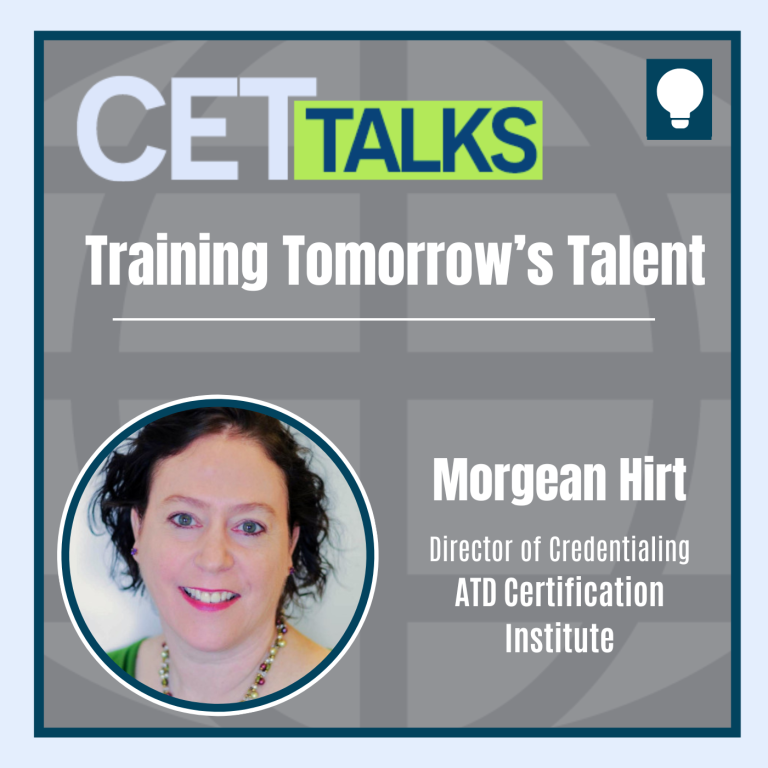
Episode 31: Training Tomorrow’s Talent: Exploring Certification, Standards, and Impact with ATD’s Certification Institute
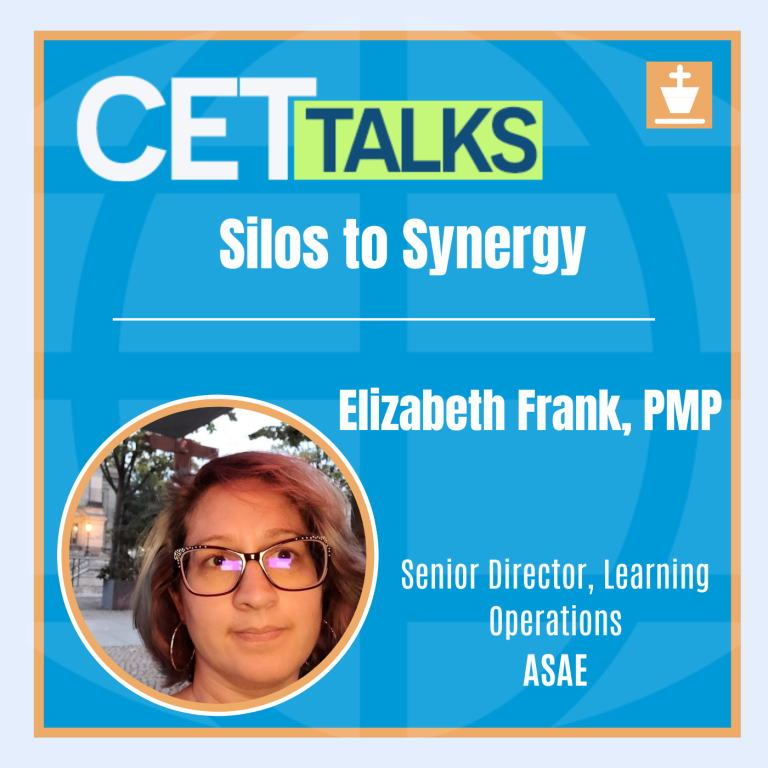
Episode 30: Silos to Synergy: Holistic Approaches to Creating Collaborative Learning

Episode 29: Credentials in Crisis: Challenges and Opportunities in Modern Education Recognition
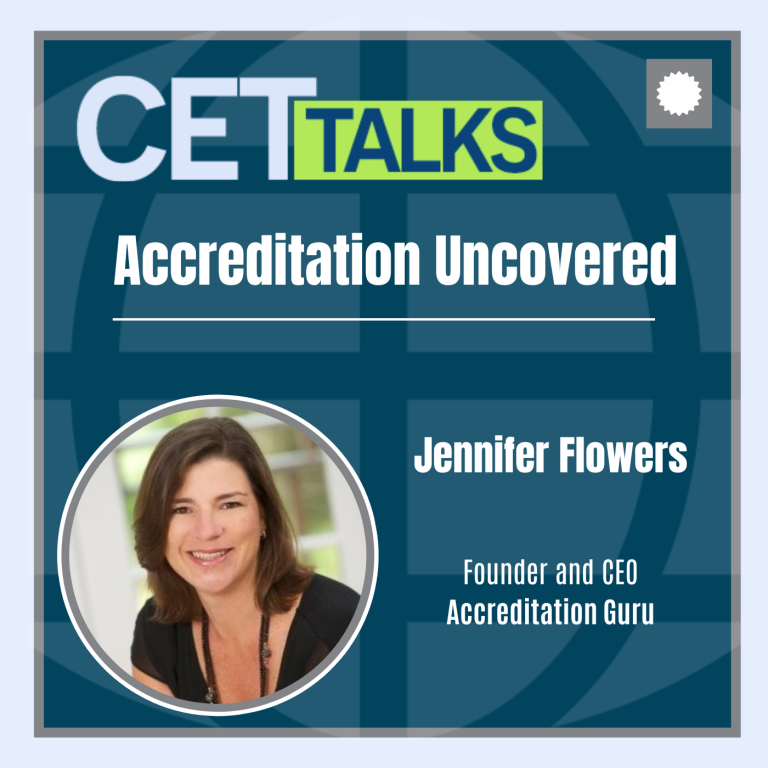
Episode 28: Accreditation Uncovered: Essential Insights from an Industry Leader
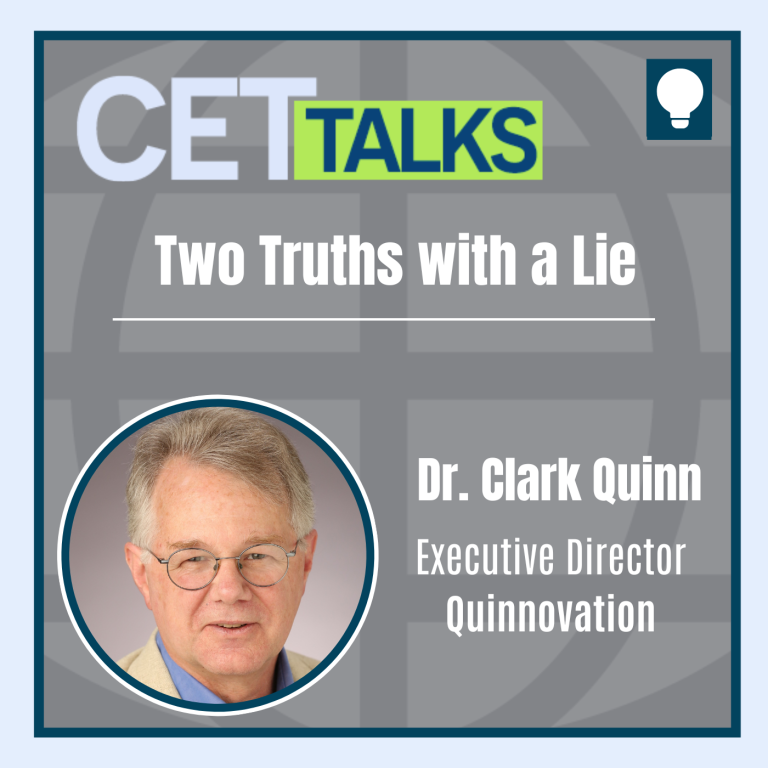
Episode 27: Two Truths with a Lie: Managing the Myths of Modern-Day Learning
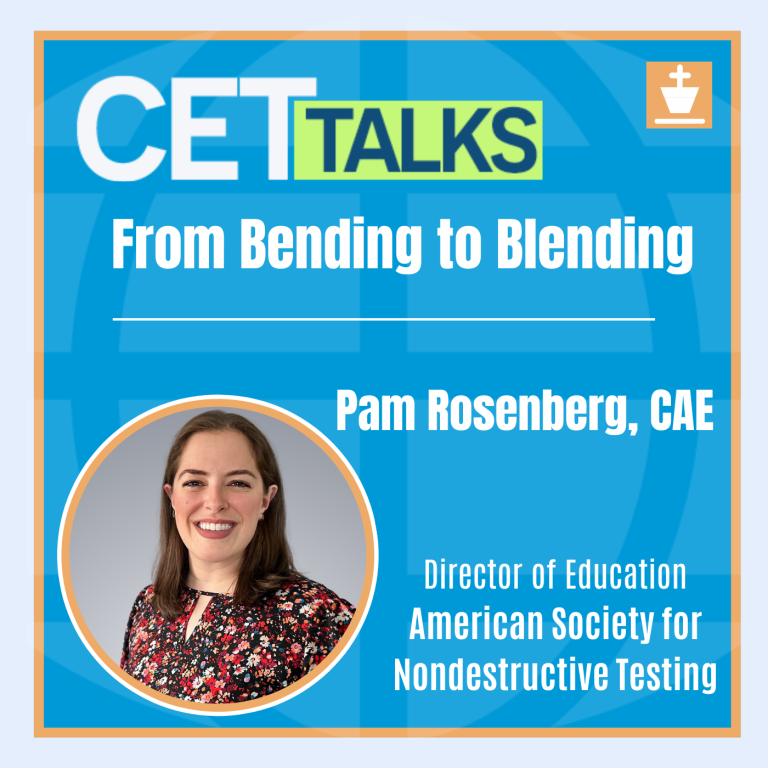
Episode 26: From Bending to Blending: Best Practices in Integrating Externally-Created Content
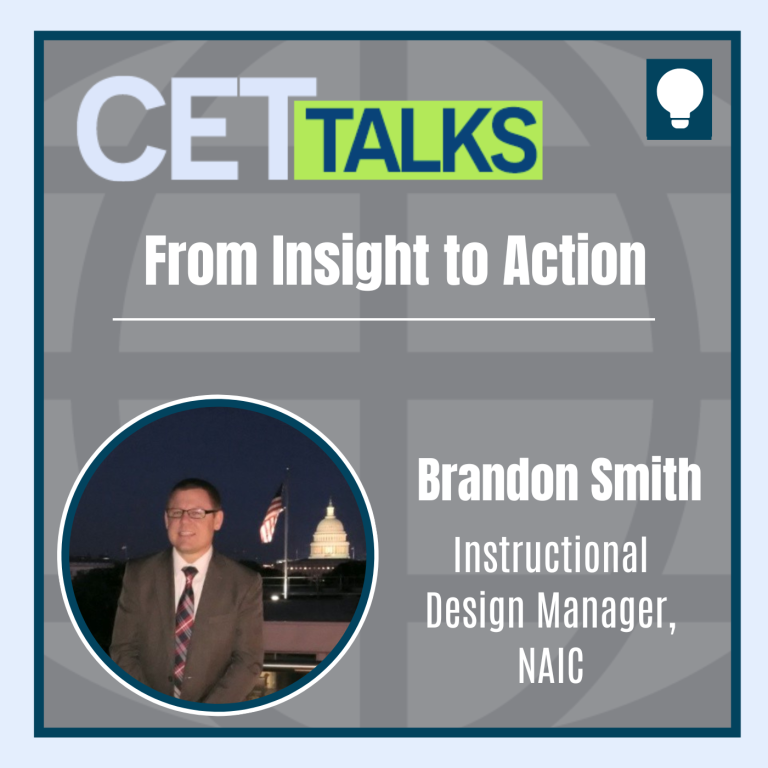
Episode 25: From Insight to Action: Charting the Career Path of a SME-turned-ISD

Episode 24: Cultivating Careers: The Power of Employee Engagement for Organizational Success

Episode 23: Igniting Imagination: Crafting Creativity in Training Environments
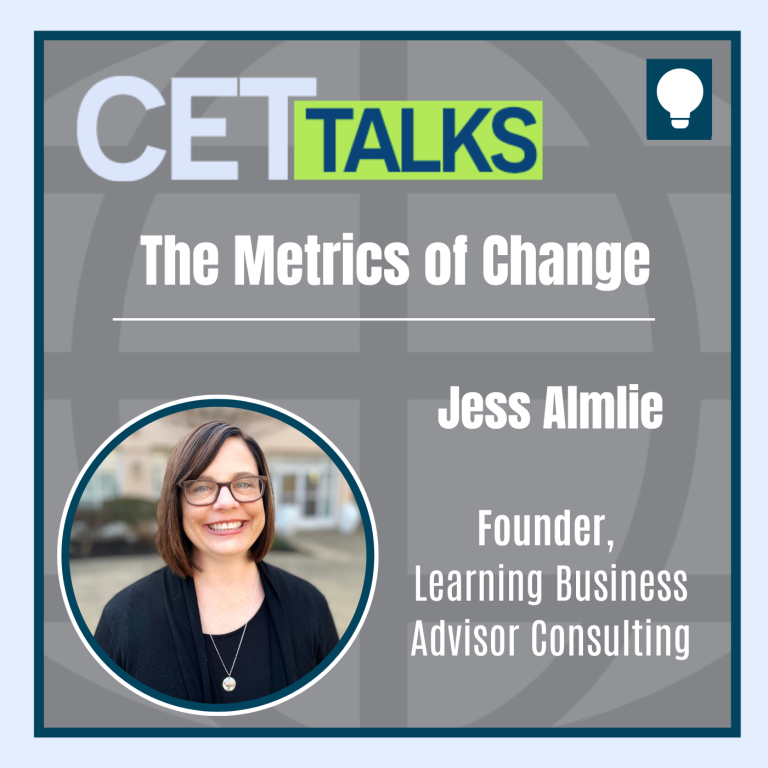
Episode 22: The Metrics of Change: Navigating Purposeful Measurement in L&D
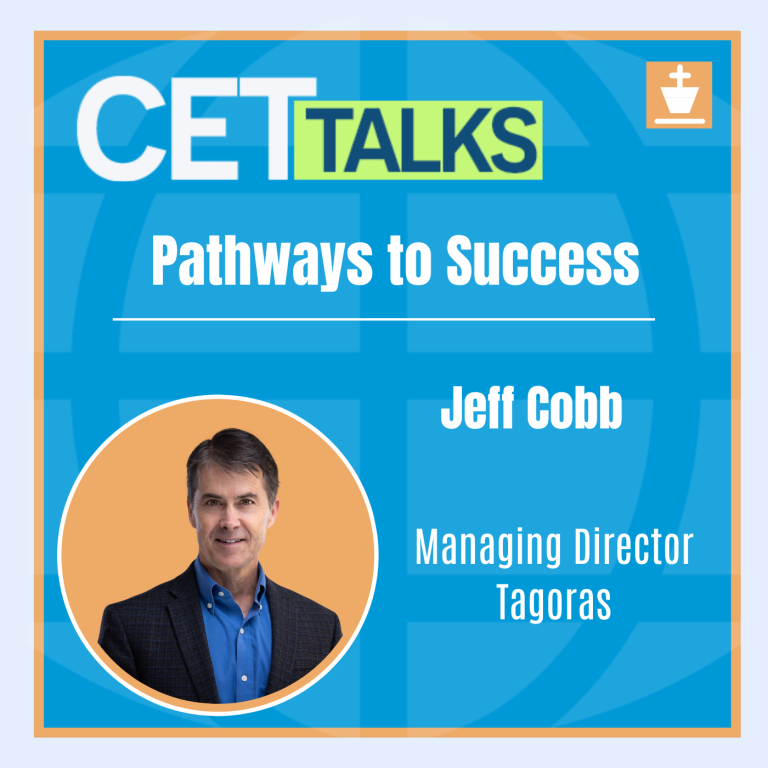
Episode 21: Pathways to Success: The Value of Lifelong Learning through Digital Credentials
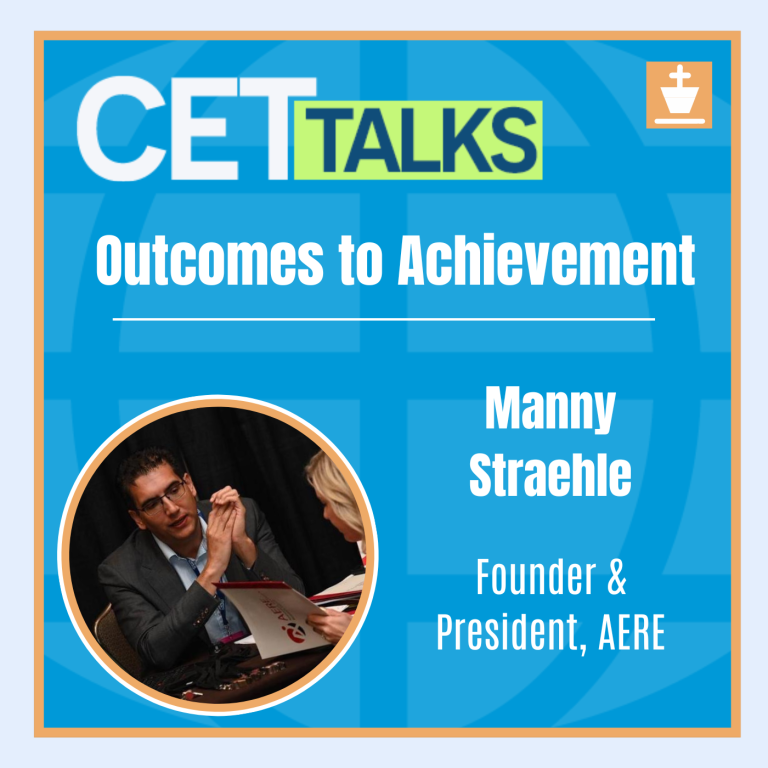
Episode 20: Outcomes to Achievement: Crafting Tomorrow’s Workforce Through Competency Models
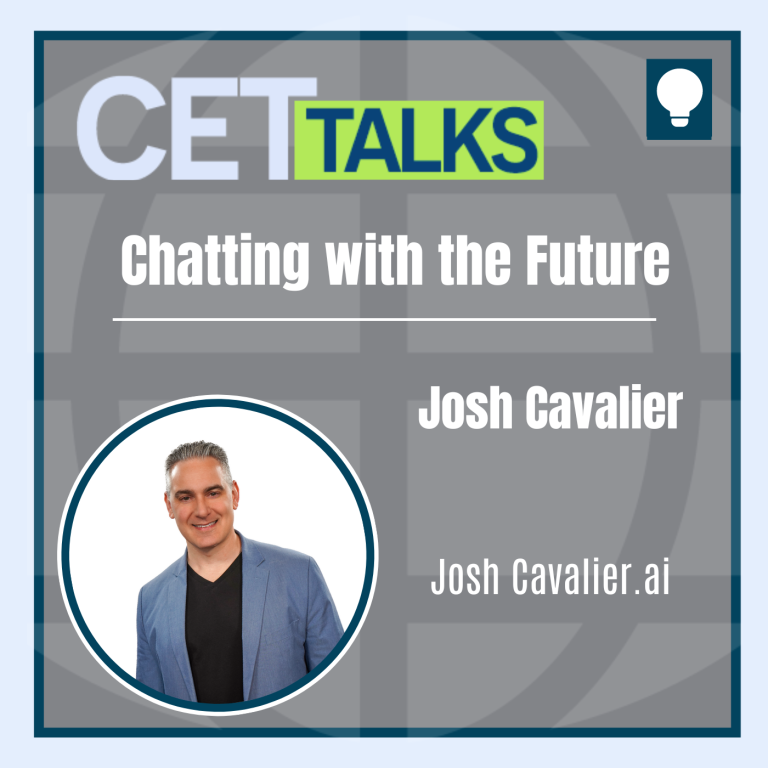
Episode 19: Chatting with the Future: Enhancing AI Output Through Prompt Engineering
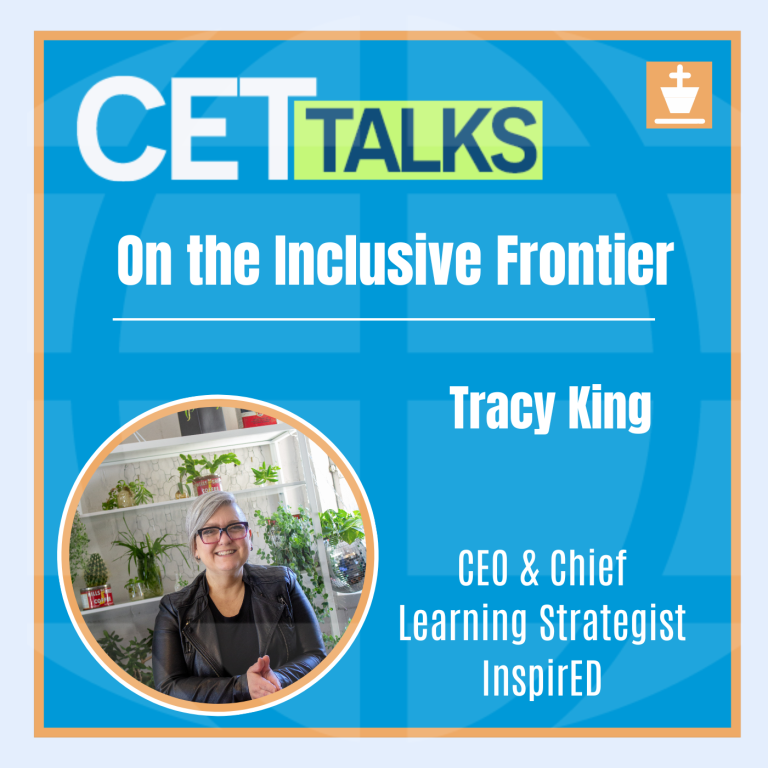
Episode 18: On the Inclusive Frontier: Harnessing Neurodivergence in Modern Training

Episode 17: Designing with Purpose: Strategies for Accessible e-Learning Development
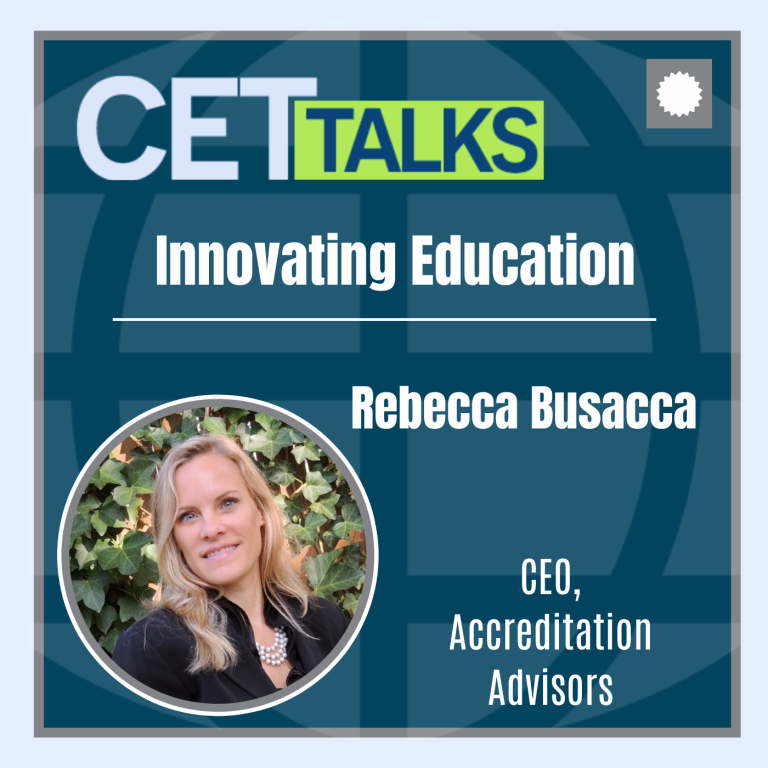
Episode 16: Innovating Education: Navigating Accreditation for Short-Term Training

Episode 15: Beyond the Basics: Elevating Virtual Training through Expert Facilitation
